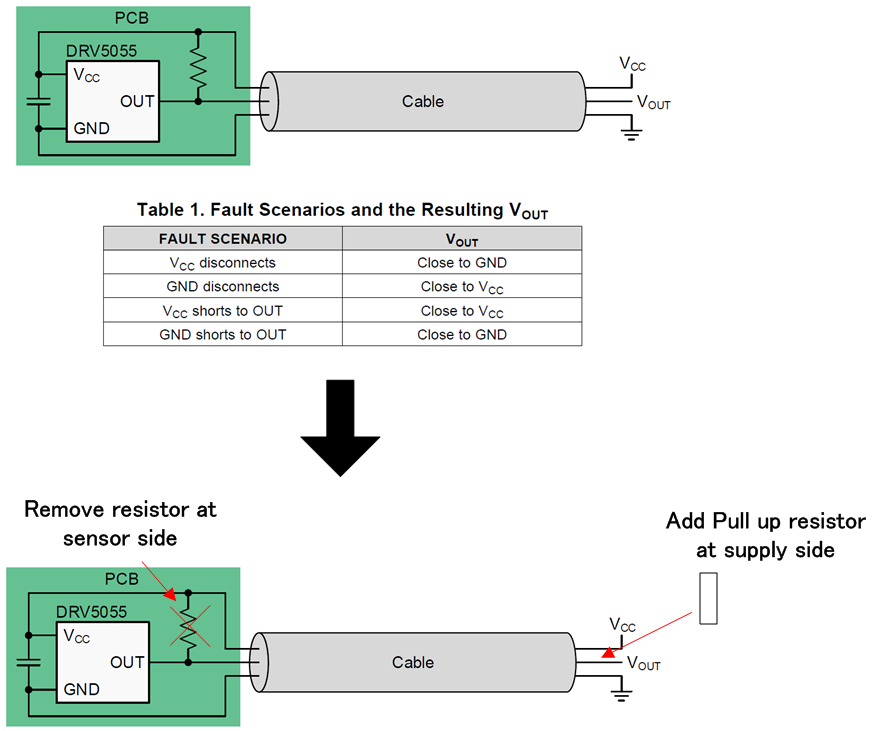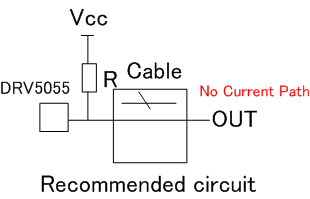Other Parts Discussed in Thread: DRV5057
Hello,
I would like you to confirm about below.
* According to datasheet, there is following figure and Table.
We understand that this connection (Vcc and OUT) can detect disconnect of Vcc and GND.
However, user can NOT detect disconnect of OUT in this case because OUT will become undefined state.
So customer will change connection of pull up resistor as shown below.
Customer understand that meaning of this pull ip resisor is only detection of disconnect.
Therefore, they can apply this change. However, if you have any concern about this change, could you please let us know ?
Best Regards,




